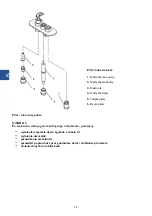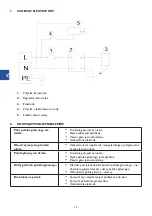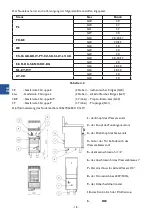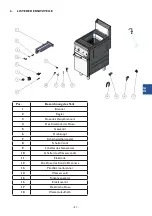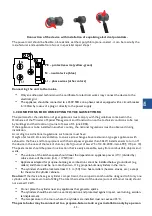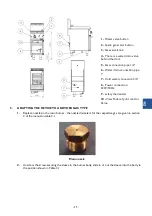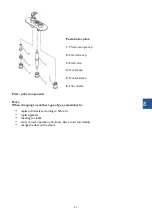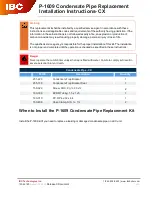
- 24 -
EN
1.
CHARACTERISTIC OF THE DEVICE
The housing is made of stainless steel. The tabletop is mounted on a base with four feet, by means of which
you can level the appliance. Leveling is possible within the range of ±10mm.
The main components of the appliance are: worktop with tank and baskets, gas valve, water valve to fill the
chamber. The panel is equipped with a gas valve knob, a spark generator button and a button starting the
water valve, which allows the chamber to be filled. Behind the door there is a water drain valve from the
chamber and a pilot flame viewfinder.
The device is equipped with a set of nozzles appropriate for the particular market/country.
2.
PASTA MAKER INSTALLATION
The pasta boiler should be placed on a stable surface in a closed room with the power off. Then level the
appliance by means of the feet in the base.
adjustable foot
Place the appliance so that it is accessible at least from the front. There should be a wall made of non-
combustible materials behind the device.
The pastamaker should be connected to the following services:
•
Cold water 3/4”’
•
Gas 1/2”
•
Sewage 1”
•
AC 230V/50Hz
The device can be set up in a row of appliances. If the appliance is not set up in a row with other devices
of the same line, the walls adjacent to the appliance (rear and side) should be made of non-combustible
materials.
The power outlet should have an up-to-date readings related to electric shock protection.
3.
CONNECTION
3.1.
CONDITIONS FOR CONNECTION TO MAINS:
•
You must check if voltage in grid is equal to the grid indicated on device’s rating plate
•
To plug the device in electricity network you must perform plugging of the power cord in the terminal
box placed on the back wall of the device.
The power cord with a plug IS NOT the part of the set
and you must buy it.
•
You must necessarily join the device to the installation of equalising electrical potentials with the help of
equipotential bolt placed in the back of the device. It is marked by the following symbol:
To join the device to the installation of equalising electrical potentials, you must:
•
Remove the nut from the bolt
•
Introduce equpotential’s cable
•
Tighten the nut until it stops
•
You must plug the second end of equipotential cable in the countervailing rail.
Summary of Contents for 9745110
Page 2: ......

